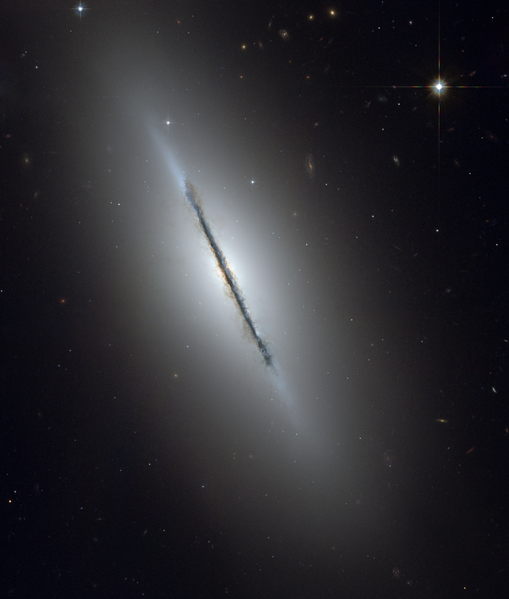File:Ngc5866 hst big.png

Cabirka muuqaalkaan: 509 × 599 pixels. Waxyaabaha kale xalinta: 204 × 240 pixels | 408 × 480 pixels | 652 × 768 pixels | 870 × 1,024 pixels | 1,739 × 2,048 pixels | 3,190 × 3,756 pixels.
Faylka asalka ah (3,190 × 3,756 pixels, weyninka faylka : 25.78 MB, nuuca MIME: image/png)
Taariikhda faylka
Riix taariikhda/waqtiga si aad u argto faylka sida oo ahaa markiisa hore.
| Taariikhda/Waqtiga | Sawir yar | Cabirka | Isticmaale | Ka hadalka | |
|---|---|---|---|---|---|
| kan hadda | 18:38, 16 Febraayo 2009 |  | 3,190 × 3,756 (25.78 MB) | Spencer | {{Information |Description={{en|1=From original NASA press release: :This is a unique view of the disk galaxy en:NGC 5866 tilted nearly edge-on to our line-of-sight. Hubble's sharp vision reveals a crisp dust lane dividing |
Faylka lagu isticmaalay
waxyaabaha soo socda ee bog ayaa adeegsanaya faylkaan:
isticmaalka faylka aduunka
Wikisyada kale ee soosocda ayaa adeegsanaya faylka:
- Ku isticmaal ab.wikipedia.org
- Ku isticmaal ace.wikipedia.org
- Ku isticmaal af.wikipedia.org
- Ku isticmaal af.wikibooks.org
- Ku isticmaal af.wikiquote.org
- Ku isticmaal af.wiktionary.org
- Ku isticmaal ak.wikipedia.org
- Ku isticmaal als.wikipedia.org
- Ku isticmaal am.wikipedia.org
- Ku isticmaal am.wiktionary.org
- Ku isticmaal ang.wikipedia.org
- Ku isticmaal ang.wiktionary.org
- Ku isticmaal an.wikipedia.org
- Ku isticmaal an.wiktionary.org
- Ku isticmaal arc.wikipedia.org
- Ku isticmaal ar.wikipedia.org
- Ku isticmaal ar.wikibooks.org
- Ku isticmaal ar.wikinews.org
- Ku isticmaal ar.wikiquote.org
- Ku isticmaal ar.wikisource.org
- Ku isticmaal ar.wikiversity.org
- Ku isticmaal ar.wiktionary.org
- Ku isticmaal arz.wikipedia.org
- Ku isticmaal ast.wikipedia.org
- Ku isticmaal ast.wiktionary.org
- Ku isticmaal as.wikipedia.org
- Ku isticmaal av.wikipedia.org
- Ku isticmaal ay.wikipedia.org
- Ku isticmaal ay.wiktionary.org
- Ku isticmaal az.wikipedia.org
- Ku isticmaal az.wikibooks.org
- Ku isticmaal az.wikiquote.org
- Ku isticmaal az.wikisource.org
- Ku isticmaal az.wiktionary.org
- Ku isticmaal bat-smg.wikipedia.org
- Ku isticmaal ba.wikipedia.org
- Ku isticmaal bcl.wikipedia.org
- Ku isticmaal be-tarask.wikipedia.org
- Ku isticmaal beta.wikiversity.org
- Ku isticmaal be.wikipedia.org
View more global usage of this file.